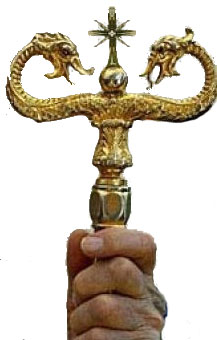The Four Stages of Gestation
If we were to take a revisionist look at our embryological unfolding, by discarding the classical trimester as a timeline of 40 weeks, by the simple division of this period of gestation, into four. This helps us to marry our model of development out of the four kingdoms that are recapitulated throughout the gestational period. We are not here to deify Ernst Haeckel’s theory of phylogeny recapitulates ontogeny, but can use the generalization or premise that if a structure predates another structure in evolutionary terms, it appears earlier in the formative construction of the embryo. In this way, we can observe that the embryo unfolds over a four-part development cycle. This recapitulation illustrates the unfolding of an explicate reality through the four kingdoms.
This fourfold embryological division enables us to move from a purely physiological context to an ontological framework where each realm is incorporated into the human physical matrix. The common connection between ontogeny (to be created) and phylogeny (our evolutionary history) can help us model and illustrate that we contain the early kingdoms as embryonic patterns originating from shared evolutionary lines. Even though we know that development is a seamless process, these four kingdoms or stages are heralded by unseen elements, which we can illuminate in a non-biochemical metaphor as an actual embodiment of the essence carried by the iconic caduceus and the subtext or interior meaning that each element of the caduceus carries.
The embryonic stage lasts around 10 weeks; in the first 5-8 days or so the zygote lies in virtual space before implantation, in an undifferentiated ‘about-to-be’ state. It then implants as a blastocyst, further differentiates and around the eighth week it’s officially named a fetus rather than an embryo, and our epigenesis begins, as the ‘animal’ slowly emerges from a formless egg.
Eastern Orthodox Cross with double serpents
The original egg cell or ovum has two poles: an animal (future ectoderm & mesoderm) and a vegetal pole (future endoderm). Cell division in the zygote occurs with the first cleavage (always along the vegetal-animal axis of the egg), the second cleavage is perpendicular to the first. This cross, as it is written in the Qur’an, is a sign. It reminds us of our origins. It is the two elements of the caduceus when brought together–the vertical (the staff and our ectoderm and mesoderm) and the horizontal (the snake and our endoderm). We may be reminded that in Eastern orthodoxy the caduceus is built into the Bishop’s Crosier, with two snakes (dragons sometimes) on either side of the cross, mounted at the end of the staff. The cross as a symbol is superior to either staff or snake(s) alone.
4 ten-week periods within our gestational timeline
Over the forty-week cycle, four transitional moments occur, with the fourth (birth) being the last. These moments occur at the junction point of each ten-week period. The first is the physiological moment of acceptance– the mother accepts the embryo ‘as is’–potent, congruent, integral, and whole. If the pregnancy continues and the mother does not abort, the template is congruent and full of potential.
Transitional moments within the four 10-week gestational timeline
Using our iconic symbols we could place the staff (of the caduceus)–the symbol for integrity–as a bridge or transitional icon between these two parts of the timeline to represent this intact, congruent set of instructions.
Around twenty weeks (slightly sooner in multiparous women) there is a moment known as the quickening. It is the time when the mother feels the movement of the fetus and knows that there is life within her. This could be symbolized by the symbol of (snake) flexibility to denote rhythm, movement, transformation, unfolding, and life.
In the weeks nearing thirty, the fetus is covered in a thick gel that protects the skin. As this begins to decrease, muscle bulk increases, thalamic connections develop, the lungs mature the eyelids open and close, and the visual cortex becomes more developed. It is as if the fetus now develops the capacity to see (a distant forerunner to be, reflective). This third transitional period of reflection could be illustrated by the symbol of the wings. At this point, women are often seen as being pregnant and inspire courtesy and help in others as they begin to really carry the extra weight (the animal) of their pregnancy.
The fetus then reaches its final moment when it leaves the safe environment of the uterus and is birthed into the world. This is its most dangerous moment, as it surmounts the difficult journey of vaginal birth or caesarian section. In a similar fashion, another icon could be placed at the end as a crossing point from an inner world–safe and secure within the womb–into an unknown future. This is the dove, representing homecoming, land, future, peace, safety, and the Promise. The child is in an instinctual or unconscious act of surrender as it emerges into life, although we do recognize that some babies do not surrender to the inevitable, but emerge in dangerous or medically induced circumstances, marking their lives indelibly with the stigma of a ‘difficult birth’. The mother too, surrenders to the inevitable moment of birth (or to her physicians and their needs for safety and wellbeing).
The dove symbolizes peace, promise and hope (as in Noah and the flood), and surrender to the Creator or the Divine or to genetics (small or misshaped pelvic opening, large baby), fear (pain, length of labour, peer pressure, cultural norms etc.), malpractice (physician’s own fear, incompetence, preference, safety concerns, local [hospital] jurisdiction), authority (peer pressure, physician, midwife, husband, mother) and ignorance (of birth).
The following articles relate to the journey:


